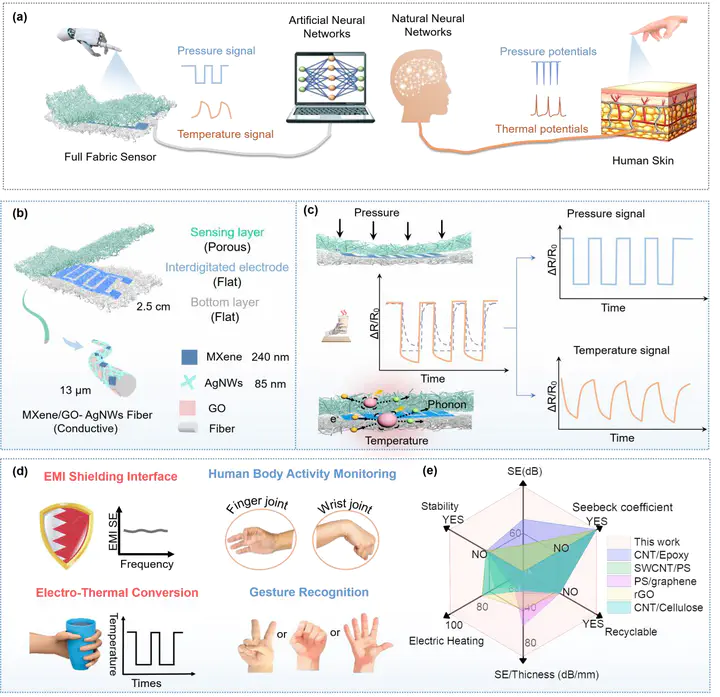Knot‐Patterned Treble‐Weaving Smart Electronic Textiles With Advanced Thermal and Moisture Regulation for Seamless Motion Monitoring

Abstract
Electronic textiles (e-textiles) promise advancements in wearable devices and electronic skin, thanks to their flexibility, breathability, and conformal properties. However, their micrometer-scale porous structure, while enhancing these features, poses challenges in sample stability and data reproducibility. To address this contradiction, this study introduces a hybrid macro-micro mixed scale strategy. Specifically, at the macro scale, dimensionally stable and breathable thermally bonded nonwoven fabrics are utilized as interdigitated electrodes to provide a stable platform for the integration of sensing elements, while spun lace nonwoven fabrics leverage the high sensitivity of textiles by a micrometer-scale fluffy porous structure serve as the sensing material layer. Furthermore, two-dimensional MXene nanosheets, graphene oxide (GO) flakes, and one-dimensional silver nanowires are incorporated on these fabrics, exhibiting good adhesion and a nano-porous structure while eliminating the stacking and linking of nanomaterials between fibers. These structures facilitate the formation of voids and contact points required for resistive sensing. The material structures endow the e-textiles with superior comprehensive performance, including efficient electromagnetic interference shielding (84 dB), ultrafast Joule heating (3.6 °C s⁻¹), excellent pressure sensing (33 kPa⁻¹). By integrating machine learning, gesture recognition interaction (accuracy > 96.8%) and dual-mode sensing and recognition of temperature and pressure (accuracy > 98.9%) are achieved. This proposed mixed-dimensional assembly design creates a versatile e-textile that offers a practical paradigm for next-generation smart flexible electronics.